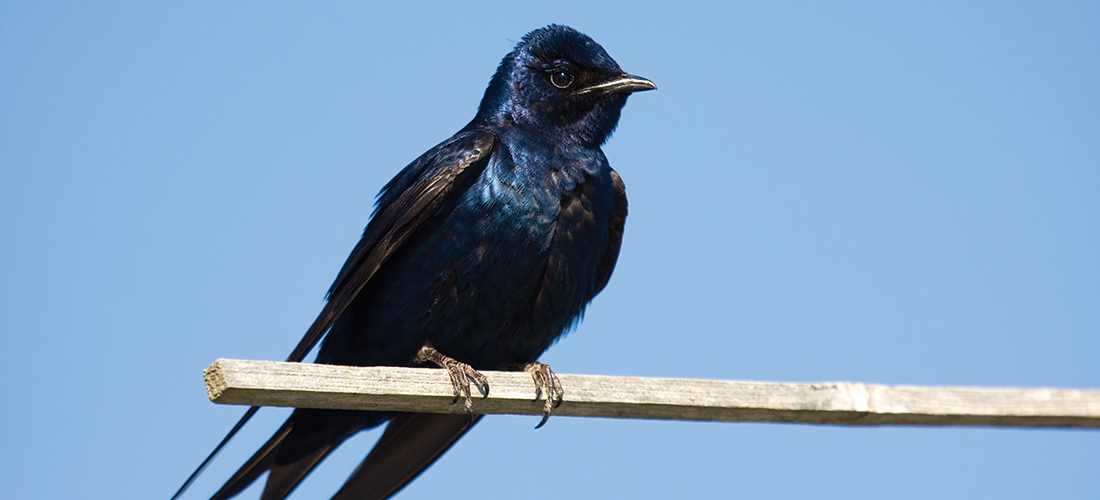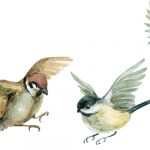
Purple Reign
For birdwatchers, the return of the purple martin marks the true arrival of spring
By Susan Campbell
For many bird enthusiasts, it is not truly spring until purple martins return. Their unique and twangy song, high-flying acrobatics and glossy plumage easily distinguish them from the other members of the swallow family. But it is the species’ affinity for manmade housing that endears them to thousands of martin landlords across the United States. In fact, east of the Rocky Mountains, purple martins are completely dependent on gourds and multifamily housing to raise their annual broods. Nesting Martins love company and pairs may take up residence in close quarters with anywhere from a few other families to dozens of them during May and June. Established colonies have been known to include a hundred or more adults if space is available. In prime habitat, less experienced birds may delay breeding until a vacancy in the housing occurs.
Martins return to North Carolina from their wintering grounds in Brazil by late March. However, early individual scouts may be seen as early as late February. Experienced adults are paired for the season by early April. Both male and female share the nest building duties, producing a nest of pine needles and leaves. The female lays five to seven eggs and patiently sits on them for about two weeks. After hatching, the young are fed by both parents for up to a month before they are strong enough to leave the nest. They remain associated as a family group not only with each other but also their neighbors in the colony until late July when they begin their journey southward for the winter.
Purple martins are found where larger flying insects are plentiful during the warmer months. This is usually close to water given that their favorite prey includes dragonflies and damselflies, which tend to be abundant near ponds, lakes and rivers. For many years it was erroneously believed that martins were an ideal form of mosquito control. But recent research has shown that they do not pursue mosquitoes. This is almost certainly related to the mosquito’s small size. Maneuvering to catch such tiny prey has virtually no energetic benefit. Also peak foraging occurs around midday, not at dawn and dusk when mosquitoes are most active.
Attracting martins requires some forethought. The birds need lots of room to soar and maneuver adjacent to their home. It needs to be in an open location at least 30 feet from human housing and 60 feet from the nearest tall trees (the farther, the better!). The gourds or house should be 10–20 feet high and clear of any bushes, shrubs or vines. Open area around the pole and housing will reduce the likelihood of predation by mammals or climbing snakes. Once a few pairs of martins are successful breeding in a new location, they will not only become very site faithful but also attract other individuals. Indeed, countless people each year find that providing for purple martins and sharing in their summertime activities is the ultimate backyard birding pursuit. OH
Susan would love to receive your wildlife sightings and photos. She can be contacted by email at susan@ncaves.com.





